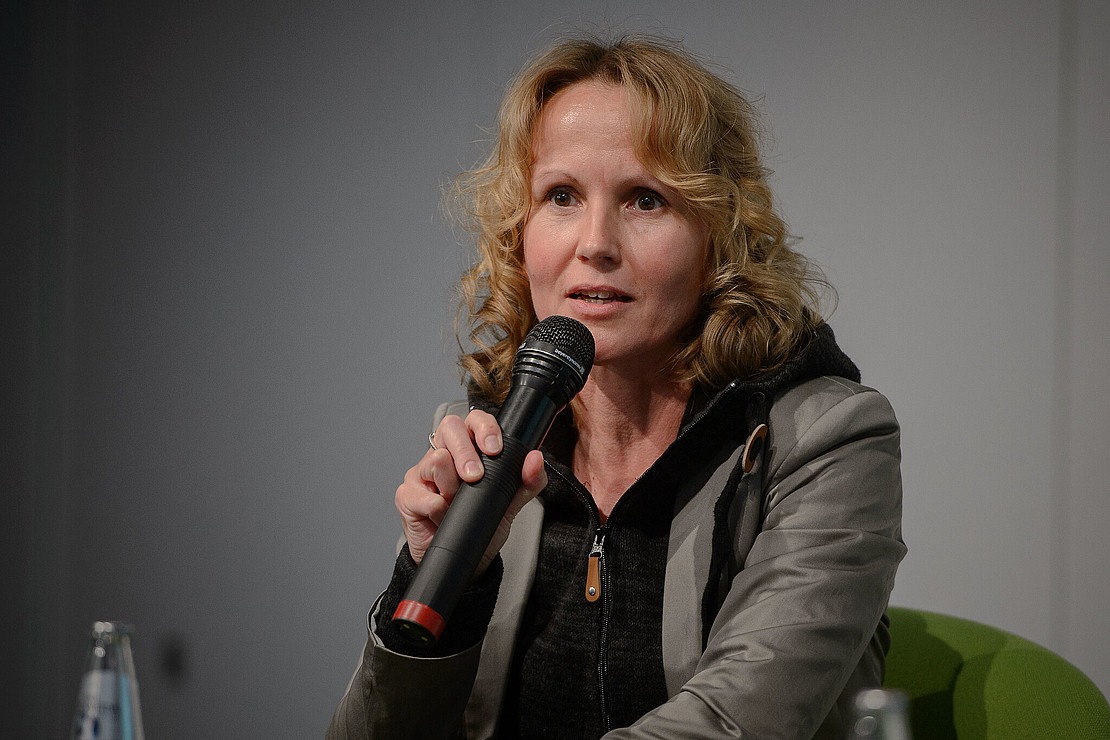This page contains automatically translated content.
Federal Ministries: Hardly any East Germans in top positions
 Image: stephan-roehl.de/Heinrich-Böll-Foundation
Image: stephan-roehl.de/Heinrich-Böll-FoundationAccordingly, one still looks in vain for top civil servants from East Germany in the all-German administrative elite: Among state secretaries and department heads in federal ministries and in the Chancellor's Office, the share of East Germans was mostly around one percent until the end of Angela Merkel's third term in office; during Gerhard Schröder's first term in office and Angela Merkel's first term in office, there were simply no East Germans in these positions at all. Even under the new traffic light coalition, there is so far only one state secretary who grew up in eastern Germany: Antje Draheim has been state secretary in the Federal Ministry of Health since December 8, 2021.
In the political elite, i.e. at the cabinet tables, the proportion of East Germans is traditionally somewhat higher, but at around 9 percent it is currently lower than in most predecessor governments after 1990. In the traffic light government, there are two East German ministers, Clara Geywitz and Steffi Lemke, and with Reem Alabali-Radovan, Carsten Schneider and Michael Keller, there are three more people who grew up in East Germany among the parliamentary state secretaries/state ministers.
These facts are partial results of the large-scale research project "New Elites - Established Personnel?" conducted by the Department of Public Management under the direction of Prof. Dr. Sylvia Veit. The researchers examined almost 3,600 career biographies from the imperial era to present-day Germany. This includes, on the one hand, members of governments (political elite) and, on the other, senior civil servants in ministries (administrative elite). The central questions: To what extent were top personnel in central government ministries retained or replaced after political upheavals? What was their composition?
One sub-study was devoted to the period after reunification. In other respects, according to another finding, change in the administrative elite is certainly evident during this phase. For example, until the end of the 1990s, the FRG's top civil servants were almost exclusively male. During Helmut Kohl's last term in office, the proportion of women among top officials was less than 2 percent, but since the late 1990s there has been an increase from around 7 percent under Gerhard Schröder to more than 20 percent in Merkel's third term. Under the new government, the proportion of women among state secretaries is higher than ever before, at well over 40 percent. Over time, moreover, the traditionally very high proportion of lawyers has fallen somewhat (from more than two-thirds in the Adenauer years to still just under 50 percent in recent government periods) and the proportion of career changers with no or very little administrative experience has risen. In addition, turnover in offices has increased: Top civil servants today stay in the administrative elite for shorter periods on average than in previous decades.
Another sub-study of the research project was devoted to the GDR. According to this study, the new political start in East and West Germany was highly divergent not only politically, but also in terms of sociodemographic characteristics of government members. The data on the level of education, for example, are interesting. While this had always been very high among FRG government members, a clear change became apparent in the GDR over time: In the early years of the GDR, more than half did not have a university degree; this was quite in line with the ideal of the workers' and peasants' state. But by the end of the GDR, almost all government members had studied and many even had doctorates.
The research project funded by the Federal Commissioner for Culture and the Media, "New Elites - Established Personnel? (Dis-)Continuities of German Ministries in System Transformations" had been running since 2017 and has now been completed.Some time ago, the research group had already announced findings according to which few convinced Nazis, but many hangers-on and only a few resisters were active in the political and administrative apparatus of the Adenauer era(https://www.uni-kassel.de/uni/aktuelles/meldung/2021/04/22/so-viel-nsdap-vergangenheit-hatte-die-bonner-elite-der-adenauerzeit?cHash=0d2e22bae0e9e30ac65d240e6e345f39).
The biographies of all persons who were members of the government or head of state of the German Reich, the Federal Republic or the GDR in 1913, 1920, 1927, 1934, 1939 or 1944 and since 1949 (politicians) or who held a leading position in a ministry at the highest state level (political officials) were evaluated for the project. The data collected included sociodemographic characteristics, educational and professional backgrounds, political activities and closeness to the system. File work at several locations of the Federal Archives was particularly informative.
These and other interesting study results are freely available as data reports at the following link: https://kobra.uni-kassel.de/handle/123456789/11789
Contact:
Prof. Dr. Sylvia Veit
University of Kassel
Department of Public Management
E-mail: sveit[at]uni-kassel[dot]de
Press contact:
Sebastian Mense
University of Kassel
Communication, Press and Public Relations
Tel.: +49 561 804-1961
E-Mail: presse[at]uni-kassel[dot]de
www.uni-kassel.de